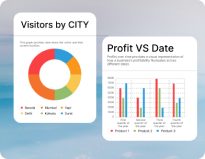Website Building A Step-by-Step Guide to Creating an E-commerce store
Introduction
In today’s digital age, establishing an online presence is crucial for any business looking to thrive. One of the most effective ways to do this is by creating an e-commerce website. Whether you’re a budding entrepreneur or an established business owner, this step-by-step guide will walk you through the process of building your dream store. By the end of this article, you’ll have the knowledge and confidence to launch your own e-commerce webstore and start selling your products or services online.

Understanding the Challenges of Multi-Marketplace Management:
Now, let’s dive into each of these steps in detail.
Before embarking on your e-commerce journey, it’s essential to grasp the basics of the e-commerce landscape. This includes understanding different business models, such as B2B and B2C, and recognizing the key players in your industry.
Defining Your Niche and Target Audience
Identify your niche and target audience. Who are your potential customers, and what products or services will you offer to meet their needs? Conduct market research to gain insights into your target market.
Choosing the Right E-commerce Platform
Selecting the right e-commerce platform is crucial. Popular options like Shopify, WooCommerce, and BigCommerce offer various features and customization options. Choose the one that aligns with your business goals.

Selecting a Domain Name
Your domain name is your online identity. Ensure it reflects your brand and is easy to remember. Use domain name registrars to secure your chosen domain.
Designing Your Website
Design plays a significant role in attracting and retaining customers. Create a user-friendly, visually appealing website with clear navigation and a responsive design.
Creating High-Quality Content
Content is king in the online world. Produce compelling product descriptions, blog posts, and multimedia content to engage your audience and boost your SEO rankings.
Choose secure and user-friendly payment gateways to process transactions. Offer multiple payment options to cater to a wider customer base

Managing Inventory and Products
Efficiently manage your inventory to prevent stockouts and overstocking. Organize your products into categories and provide detailed information for each item.
Website Optimizing for SEO
Optimize your website for search engines by using relevant keywords, meta tags, and high-quality backlinks. Regularly update your content to improve your search rankings.
Building Trust with Security Measures
Security is paramount in e-commerce. Implement SSL certificates, secure checkout processes, and data encryption to protect your customers’ information.
Mobile Optimization of website
Ensure your web store is mobile-friendly, as many shoppers use smartphones for online purchases. Responsive design and fast loading times are essential for mobile optimization.
Implementing a Marketing Strategy
Develop a comprehensive marketing strategy that includes social media marketing, email campaigns, and pay-per-click advertising. Promote your products and engage with your audience.

Customer Support and Feedback
Offer excellent customer support through various channels, and encourage customer feedback. Address issues promptly to build trust and loyalty.
Monitoring and Analytics of website
Use analytics tools to track website performance, customer behavior, and sales data. Adjust your strategies based on insights to optimize your e-commerce business.
Scaling Your E-commerce Business
As your business grows, be prepared to scale up your operations, add new products, and expand your reach. Continuously adapt to market trends and customer preferences.

Conclusion
Creating your dream e-commerce store is an exciting journey that requires careful planning and execution. By following these steps, you’ll be well-equipped to establish a successful online presence and grow your business. Remember that e-commerce is dynamic, so stay adaptable and continuously strive for improvement.
FAQs
How long does it take to build an e-commerce web store? Building an e-commerce web store can vary in time, but with dedication, it can be done in a few weeks to a few months.
With GlobeFunction you can create your own website in just 10 to 15 mins.
What is the average cost of creating an e-commerce site? Costs vary depending on your chosen platform and features, but a basic e-commerce site can cost around $1,000 to $5,000.
GlobeFunction offers in 16,000 RS.
Do I need technical expertise to manage my e-commerce website? While technical knowledge is helpful, many platforms are user-friendly and offer support. You can learn as you go.
GlobeFunction is user-friendly and easy to create your own website
Is it necessary to have a blog on my e-commerce site?
blog can be beneficial for SEO and providing valuable content to your audience, but it’s not mandatory.














